Friday, 12:00pm
27 June 2025
Festival in print
The Glastonbury Free Press at Worthy Farm brings a rich tradition of sharing the love of printing to Festival-goers. By Amy Henry
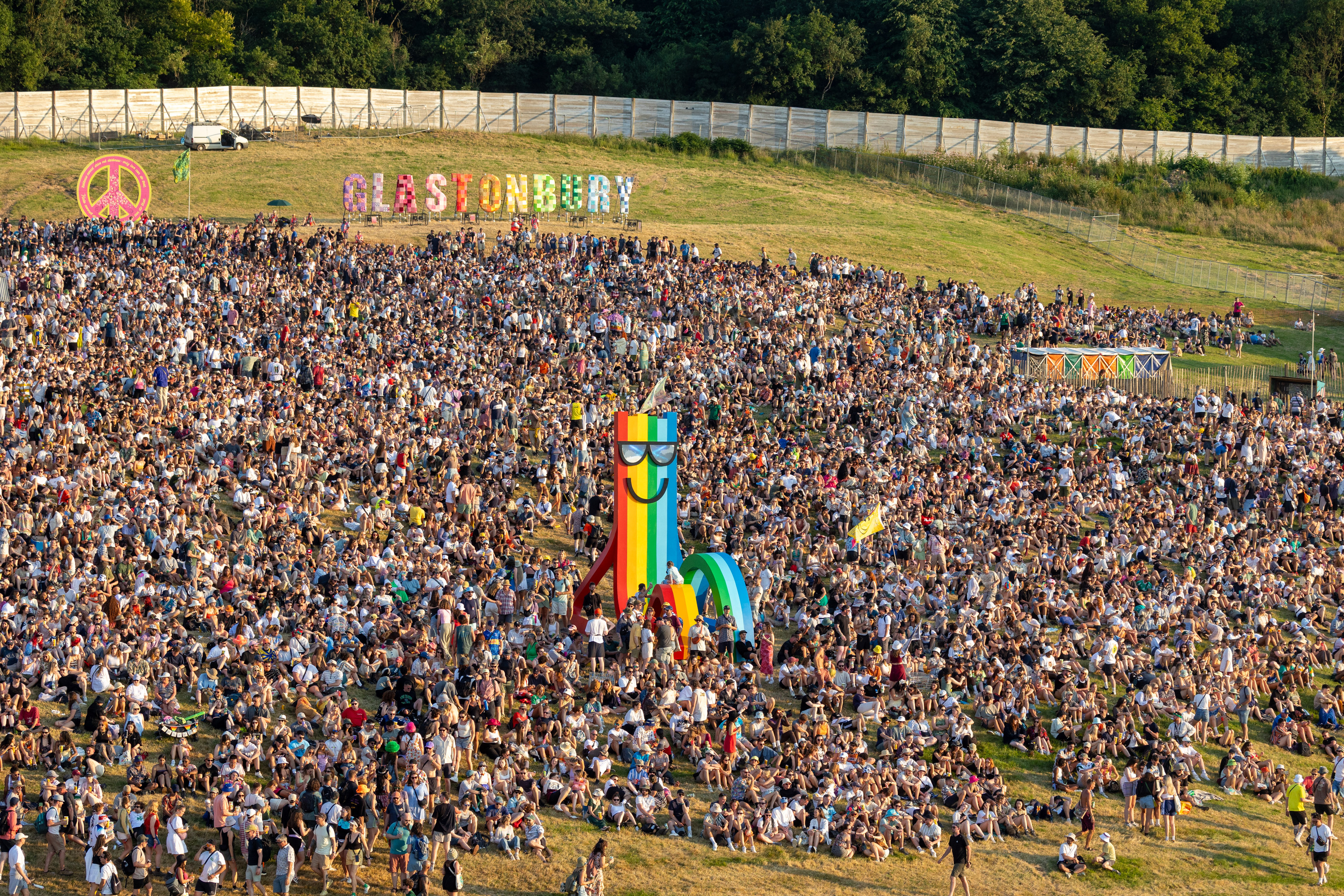
Set in the idyllic landscape of Somerset in south-western England, Glastonbury Festival, commonly shortened to Glasto, is a five-day performing arts festival attended by more than 200,000 people. Starting in 1970, its location on 1500 acres of farmland, called Worthy Farm, hosts international musicians, plus cabaret, theatre, circus, dance acts and comedy sets.
Nestled in the Theatre and Circus fields you will find the lively Glastonbury Free Press tent, a key feature of Glasto. The tent hosts a team of printers who work together, along with writers, editors and designers, to produce the Glastonbury Free Press, the festival’s official newspaper. Content for the papers are planned and commissioned by an editorial team based at Worthy Farm, working closely with Glastonbury Festival organisers Michael and Emily Eavis.
Top. Photo by Anna Barclay. Right. The printing of the Glastonbury Free Press on the Heidelberg cylinder press. Video by Andrew Long.
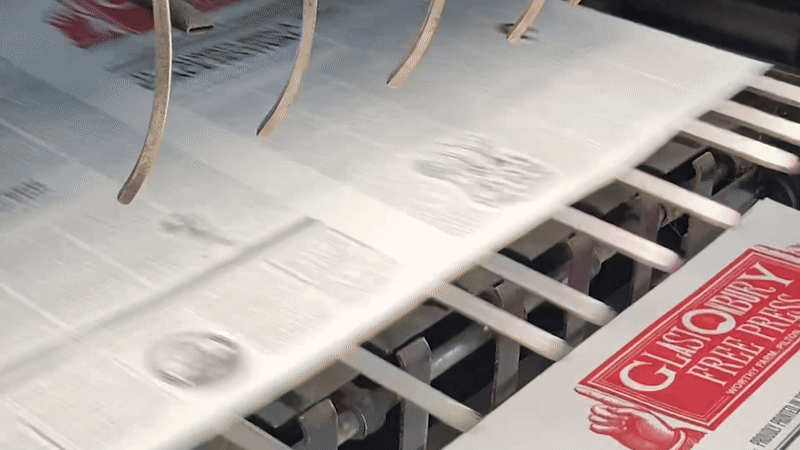
Press Officer John Shearlaw explains, ‘Rather like the festival itself, the content and production of the Free Press is a year-round process, reflecting the line-up, the aims and ambitions of the festival, its charitable activities and the many different areas that make Glastonbury so unique.’
Shearlaw explains that the Free Press began in 2011, when the festival produced The Glastonbury Firelighter, a small-scale daily broadsheet, printed off site. This led to the idea of producing a full newspaper that could be printed and distributed on site during the event.
A seven-tonne 1957 vintage Heidelberg cylinder press, which is used to print the paper and other festival materials, was sourced secondhand in Italy and transported to Worthy Farm in 2013. A small team of printers, working alongside the Festival Press Office, printed one issue of the newspaper in 2013 and since 2014, the Free Press has designed and printed two editions of the newspaper for each Glastonbury year, distributed on the Thursday and Sunday of the festival.
Shearlaw says: ‘The clack and hiss of the Heidelberg in action is a huge draw for festival-goers who visit the press and queue to get each new edition hot off the press!’
Right. Festival-goers outside the press tent with copies of the Glastonbury Free Press. Photo by Anna Barclay.
Below. The freshly printed masthead. Photo by Charlotte Hughes.
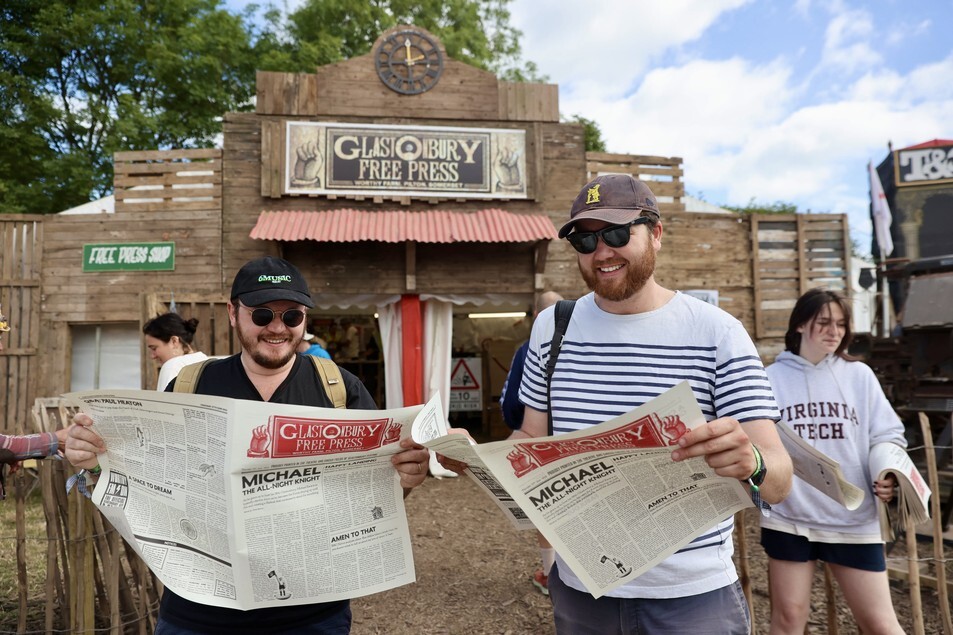
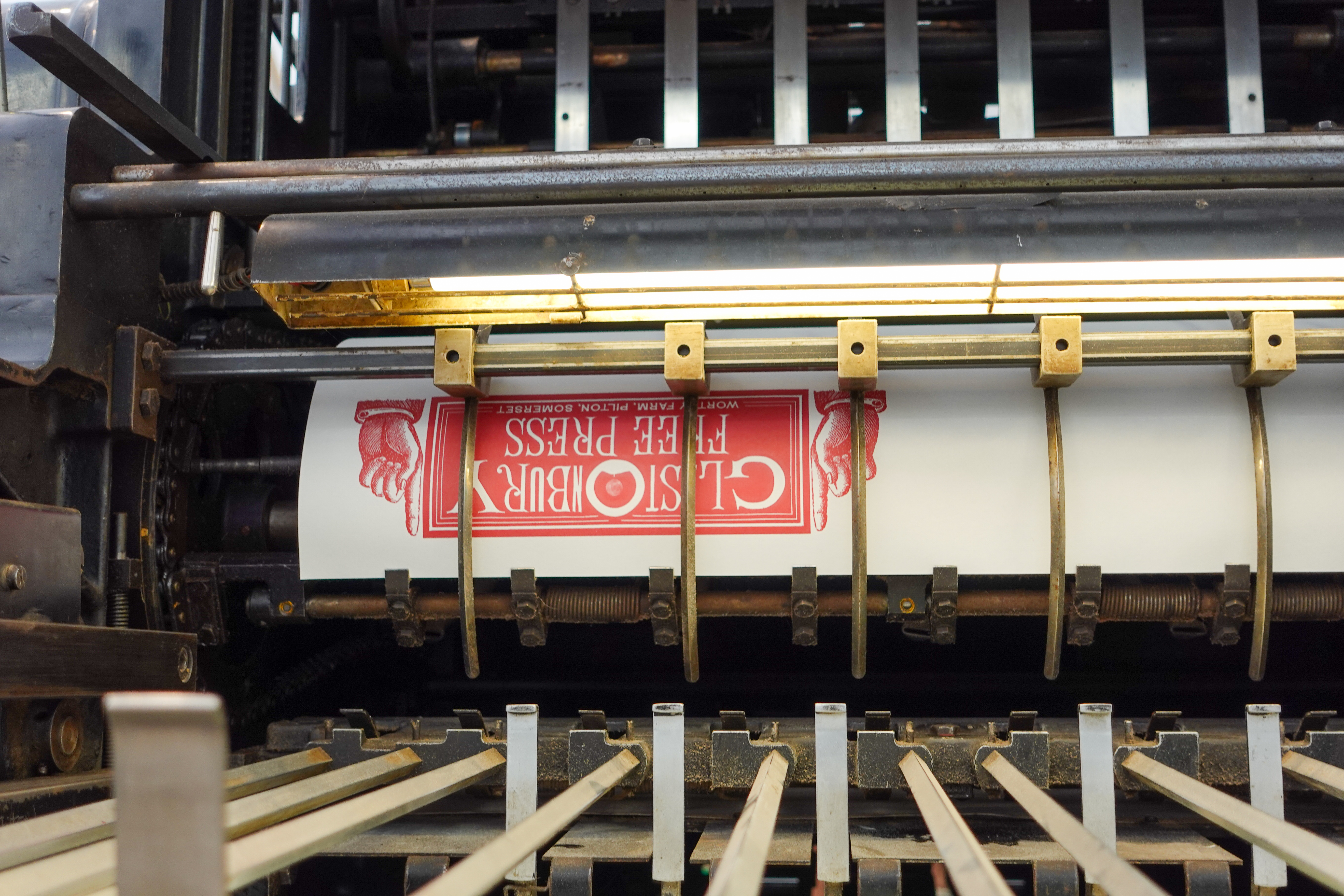
The Heidelberg press is stored in a wagon shed at Worthy Farm and moved into the Free Press tent in early June, just prior to the festival, with the help of Adrian Manning, who operates the press side of things. Andrew Long, who works in the production and printing of the Free Press, is a London-based letterpress printer and educator. He was invited to join the team last year because of his experience running a Heidelberg cylinder press.
Within the Free Press operations there are three print teams who work in shifts, rotating throughout the day, along with teams for folding and print plate collection. There is also a shift of people who are front of house, interacting with the public and answering any questions they may have. Manning likes the press to run throughout the festival so the public can see it in action.
The Free Press print team, including Andrew Long, operating the Heidelberg cylinder press. Photo by Amy Henry.
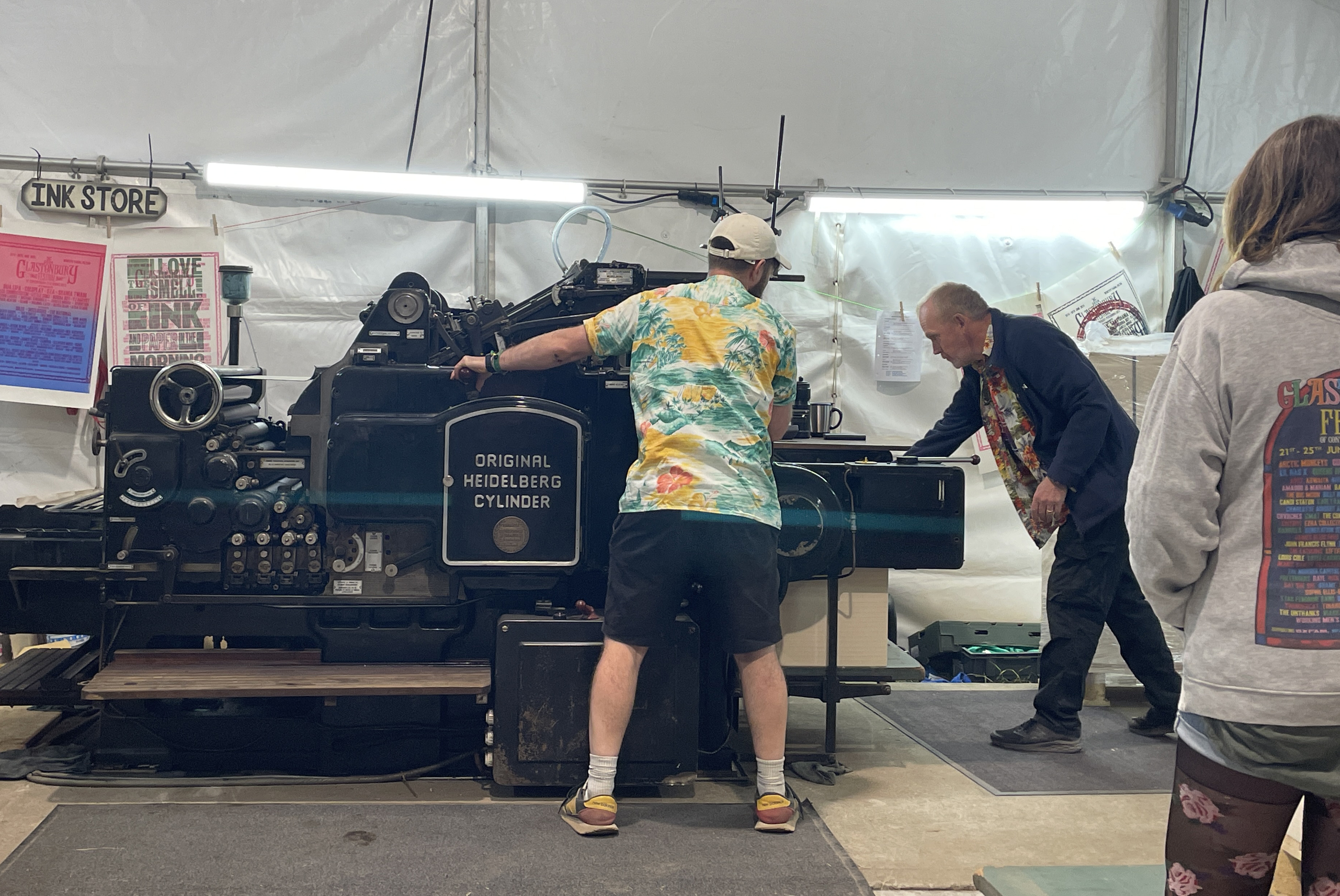
Printing in an uncontained environment such as Glastonbury does bring some difficulties. Long says that when the conditions are right, the press runs beautifully. However, changes in the weather or dusty and hot conditions can affect the paper and printing process, making it more challenging to print.
In between press runs for the newspaper, the Free Press team prints posters for the tent shop, often playing around with a variety of colours, which contributes to the many limited-edition posters that are for sale during the festival.
Poster printed by Glastonbury Free Press, 2024 – ‘I love the smell of ink and paper in the morning.’

The Glastonbury Free Press is offered to festival-goers for free over the five days of the event, with around 30,000 copies printed for each Thursday and Sunday edition.
As I am currently Glasto-bound,* I’m looking forward to seeing the Heidelburg and the print team in action, and to acquire my coveted copies of the Glastonbury Free Press.
Amy Henry, designer, writer, educator, London
* Ed’s note: Amy Henry is performing (on hula-hoops) in the Green Futures Field.
Right. Glastonbury Free Press team in operation. Photo by Andrew Long.
Below. Andrew Long shares the printing process with festival-goers. Photo by Charlotte Hughes.
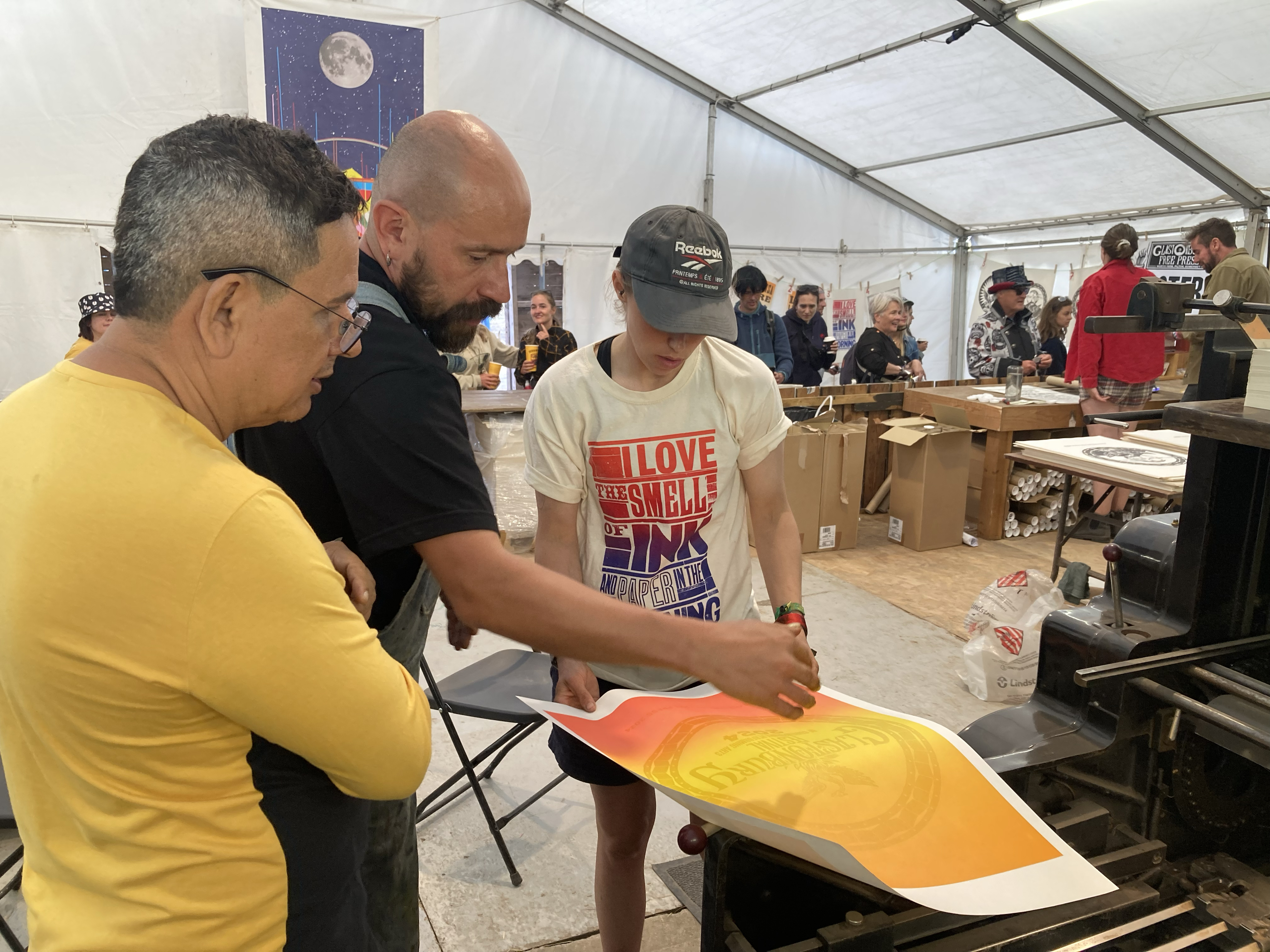
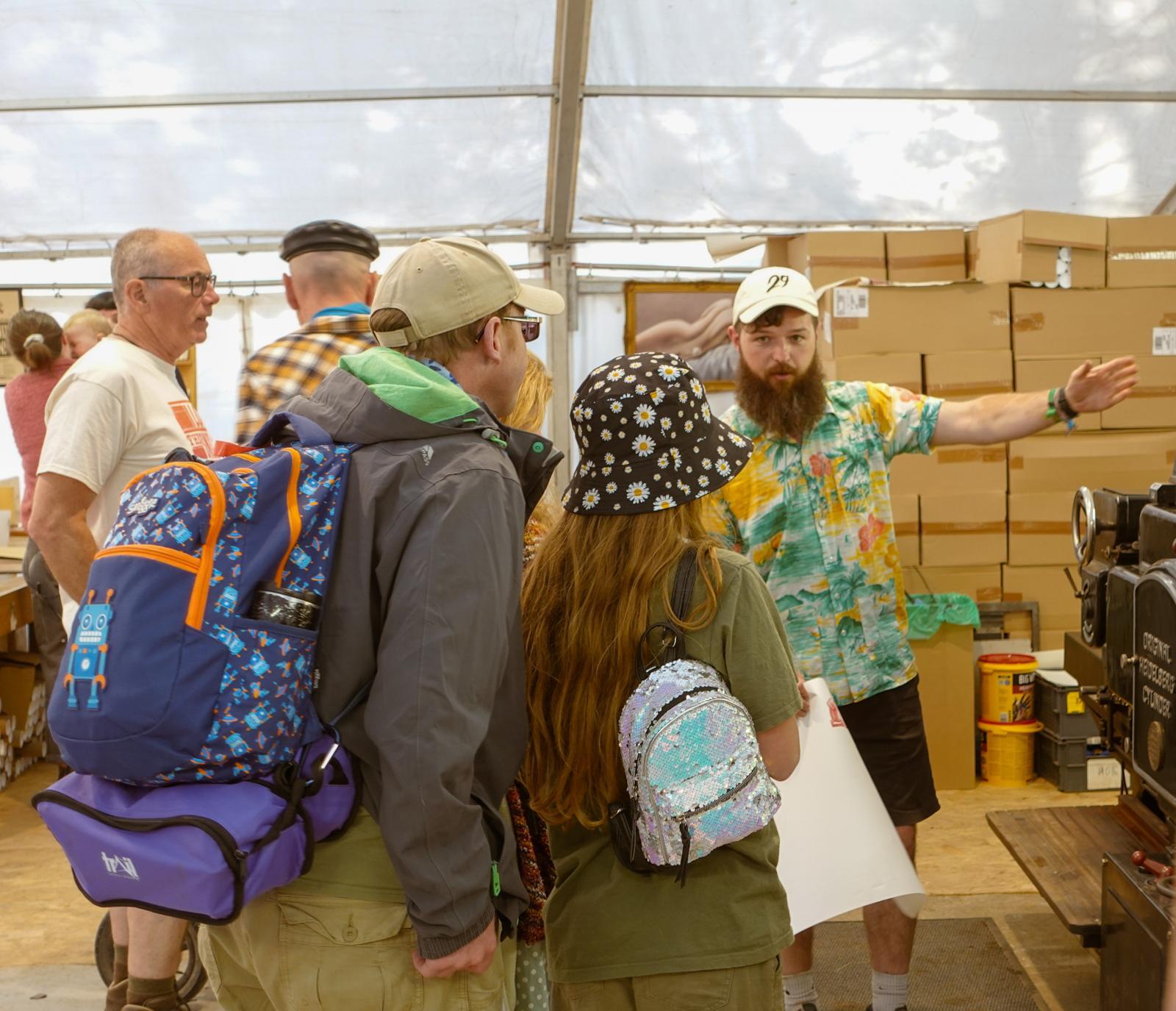
Eye is the world’s most beautiful and collectable graphic design journal, published for professional designers, students and anyone interested in critical, informed writing about graphic design and visual culture. It is available from all good design bookshops and online at the Eye shop, where you can buy subscriptions and single issues.
